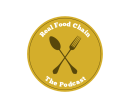A quick look at the beginnings of the Organic Movement gives a clue to price differential. Back in the day, the 1960s and 1970s, the only two forms of organic production were a return to the High Farming of the 19th century or current conventional chemical agriculture with the chemicals removed.
Taking the latter system first, removing the chemicals did nothing to remove the conditions which led to the need for pesticides and herbicides. That being the case the weeds and insects still arrived on cue to decimate crops. Those that survived were, in a supply/demand situation, worth more to consumers.
The return to High Farming in the second half of the twentieth century was not a viable option given the difference on relative wages between the 18th and 20th centuries. High Farming was a system of rotations across the landscape which integrated animals and plant crops. The manures from the animals were captured in the paddocks they grazed. These paddocks were used for four years or thereabouts. Then they were ploughed under and the manures and decomposing grasses fed a cereal crop like wheat or barley. This was followed by a root crop which was used to clean the land of weeds by ploughing between the rows. Then the paddock was resown to grass and the cycle continued. Now there were variations, sheep, dairy cattle, goats depending on the locale. Wheat, barley, rye, oats or maize again depending upon the climate and the soil. Two years in grass or three was also a variation. The idea was to turn as much plant material as possible into manures, meat or milk.
Certainly much of the work of horses and men had been mechanised by the 1960s but there is a limit to how much weeding a tractor driven implement can do and certainly the between plant weeding still has to be done by hand. All these costs add up to more expensive production and smaller outputs. Then the old supply and demand curve kicks in again.
As practitioners became better at their jobs, remember they were applying all the science since before World War One to the business of organic production, they then found other reasons to maintain the price differential. Mainly by appealing to middle class sentimentality. To be fair, the animal welfare standards in commercial piggeries and battery hen egg production units were and are abysmal.
I do believe though we now have sufficient experimentation and system development to produce plentiful amounts of organic food, in season without the organic premium. The FAO (Food and Agriculture Organisation) at the UN has argued we can feed the world only with the support of smallholders. Click here for their report. Permaculture, Biodynamics, Natural Farming are all techniques, methodologies and philosophies we can implement now to ensure a plentiful supply of fairly prices foods. The key to these working is a shorter supply line. Food must be grown as close to where it is consumed as possible.
There is much to recommend smallholder production.
The website Journey to Forever has a great page on small farms. Some of the advantages of these are: more tree cover per hectare, greater biodiversity of stock, plants and wildlife, climate moderation and food security.
Small farms, from the backyard up to about 5 hectares (12.5 acres), are local. Not only are the transport costs, monetary and carbon, removed from the system, the eater knows their farmer. Trust in our current food system is enforced by legislation. Imagine if trust were based upon a smile and a handshake! Small farms also, by definition, provide seasonal food. When this happens, the first strawberry of the year becomes a thing to celebrate, to savour and to enjoy. Seasonal eating also reconnects humans to the cycle of the year. Lambing time, honey collection, grain harvest, apple harvest and cider making, all these things become part of a cycle.
Re-introducing policies to promote and support smallholders will do as much as anything else to ensure organic, plentiful and affordable food for all.


